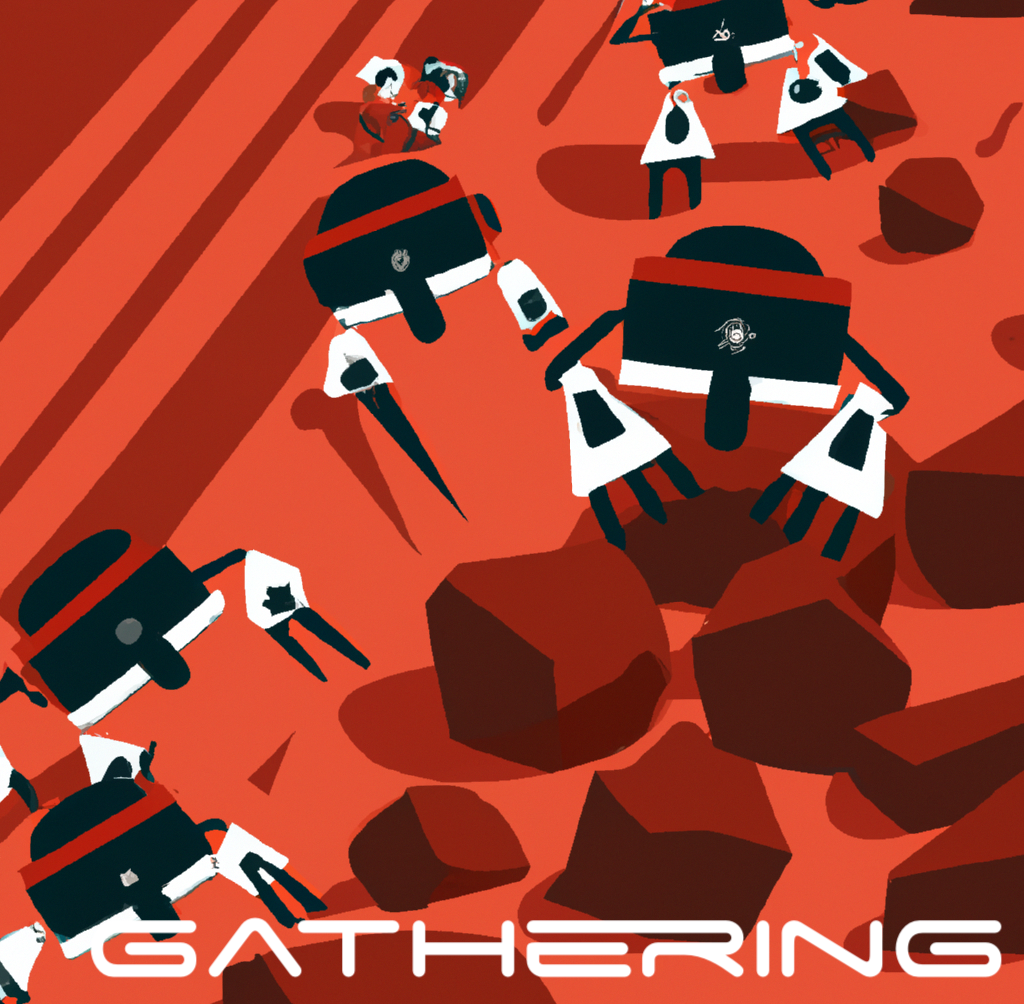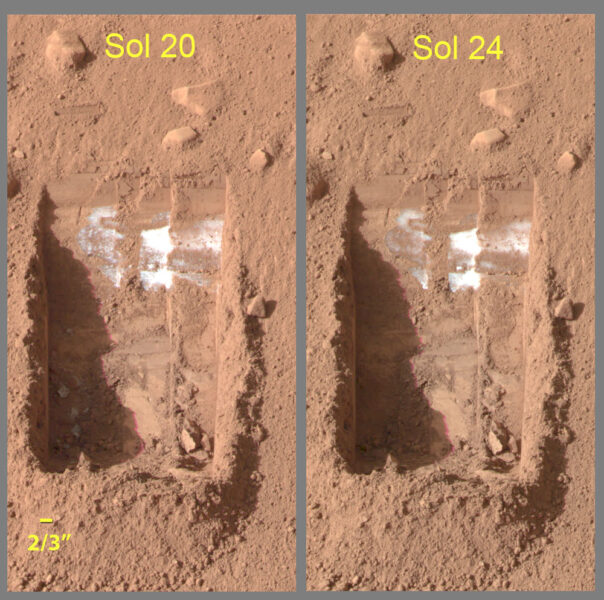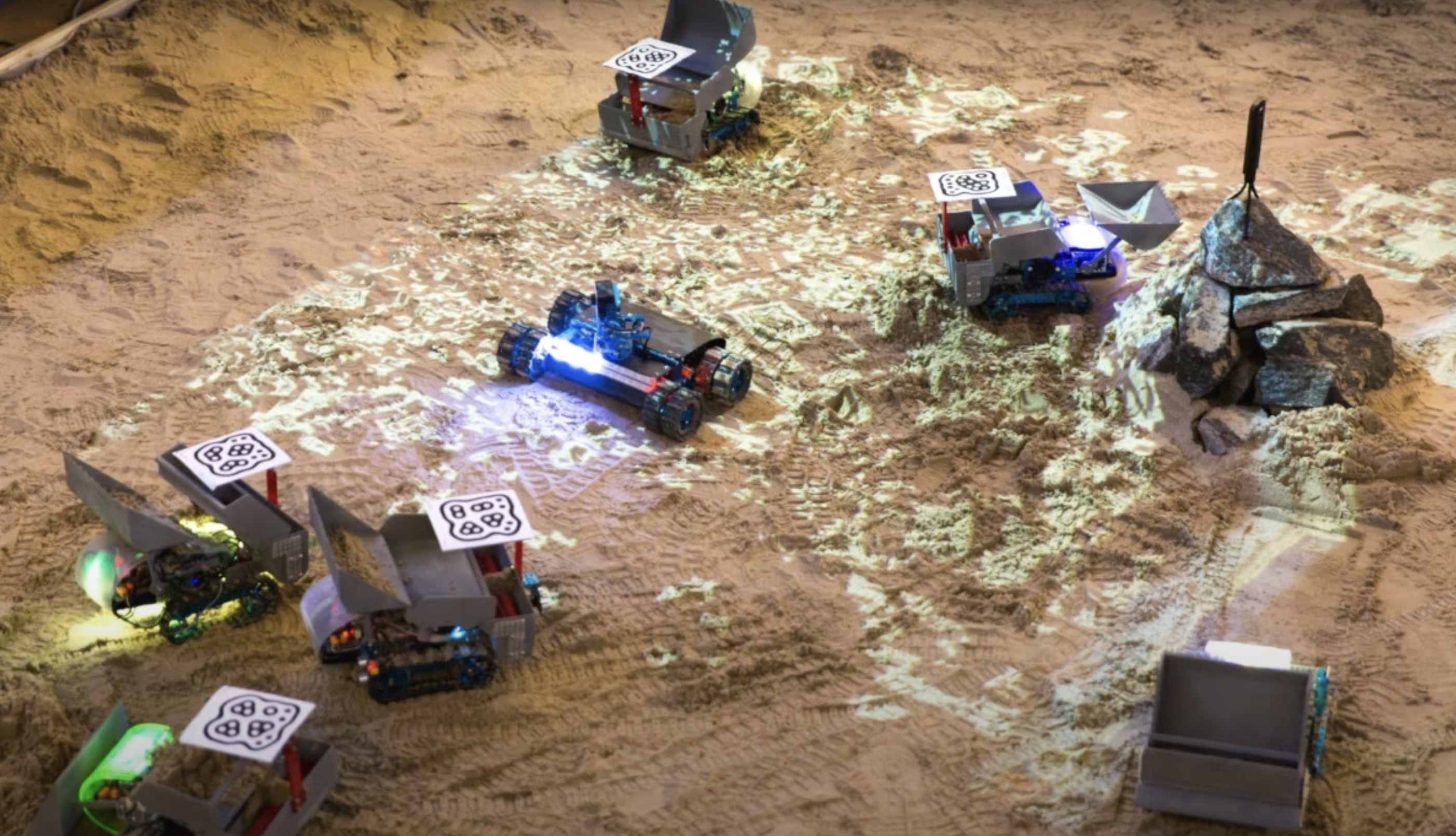
We found the location of our settlement, our source of water, and our source of regolith. How do we excavate our materials and bring them to our build site? We need robots to scoop up regolith and ice and truck it across the Martian surface.


Robots for Excavating
Small robots such as NASA's Regolith Advanced Surface Systems Operations Robot (RASSOR) Excavator are amazing at collecting sandy regolith and delivering it to other locations. We can imagine hundreds of these robots working around the clock to collect materials.
Learn More
If we have hundreds of these robots, what algorithms will make them all work together? With potentially inconsistent connection, we would want these robots to opperate on their own, leading us back to the idea of swarms - each robot working on its own, with the swarm of robots as a whole completing a task. We can look to nature to help inspire us.
Nature has Showed us Ways to Gather Materials
In nature, we see examples of small creatures going into environments they are not familiar with and finding resources, then excavating and carrying back these resources to their home base. As in Finding, each animal follows a simple set of rules, creating emerging behaviors that allow for the survival of their swarm.

In addition to being excellent at finding sources of food, Ants are then capable of distributing themselves in a way that gathers the food in their home nest.
How do ants organize themselves to collect resources?
As for finding, it turns out that each ant follows a simple set of rules. In fact, we will use the same example as we did before, but now with a focus on gathering materials. An ant would randomly wander, and if it finds food it would head back to the nest and lay a trail of pheromone. Other ants will be excited by this, and head out along the trail. For already wandering ants, if they run into a trail of pheromones they follow it if it is strong. Overtime, ants bring the entire food source to the nest.
Ants Gathering Food
Press SETUP and then GO. Notice that this is the same model as we saw before! But now focus on how the ants hone in on sources of food and then bring the entire food source back to the nest. How do the ants know when the food source runs out? Do you notice ants coming to a food source, only to discover it already empty?

NASA Swarmies
Let's look at the NASA swarmies project again. After finding their sources of materials, in the form of blocks with QR codes, the robots need to bring the blocks to a central location. This is similar to ants gathering food! We can see how a swarm finding process connects to a swarm gathering process. And in the future, Swarmies will be updated with prototypes of the NASA RASSOR robots, hightlighted above.
Learn More
Researchers have Started to Look into Using Robotic Swarms for Gathering Materials
This research, still in progress, shows us a future where robots go off like ants to excavate and carry materials from around Mars to the place of our future human settlement.

Offworld - Startups Join the Research
As mining is becoming economically viable in space, startups are joining the research. Offworld is a startup "extracting critical minerals and materials on Earth and in Space using swarms of intelligent industrial robots", making small specialized robots that can work together to mine regolith. They have a grant from the National Science Foundation, and will potentially partner with space agencies in the future.
Hover here for more info.

Design Experiments - Robots to Collect Resources
Built at a hackathon for the design collective Smart Geometry, this project explores the use of robots with scoopers that work in a swarm to bring resources from one location to another. This could be used to gather resources from the surface of Mars and bring them to the build site.Through this project we also see architects joining in ideating about the future of habitat construction - Mars is not just a place for scientists, but also for designers.
Hover here for more info.
We have now gathered our Martian materials.
Now that we have our settlement location, sources of water, and gathered our building material we can finally start building. How can swarms help us in building structures that are human-inhabitable?